
Parental Note: This experiment is geared towards ages 7 and up. The project will require some support to gather materials and use an X-acto knife.
Additional Note: This experiment will take roughly 1 hour to complete.
Experiment Overview:
Wind is a form of kinetic energy, which is energy in motion. As the sun heats the various surfaces of the planet, it does so somewhat unevenly. In the places that are warmed the most (such as at the Equator), the air rises, leaving less air near the surface of the Earth than in surrounding areas that did not get as warm. In places with warm air that rises, the air molecules become more tightly packed together, which increases the air pressure. Air moves from places with high pressure to places with lower pressure. As the air whooshes from place to place due to changes in pressure, we call it wind! You cannot see the wind but sometimes you can feel it when it moves or see the leaves on trees rustle as it blows.
People are able to make use of the kinetic energy of the wind by using it to power wind turbines to provide electric power. There are also other uses of the wind, such as to power sailboats! In this experiment, you will build a toy car with a mast and sail, so that it can run on wind power!
Experiment Materials:
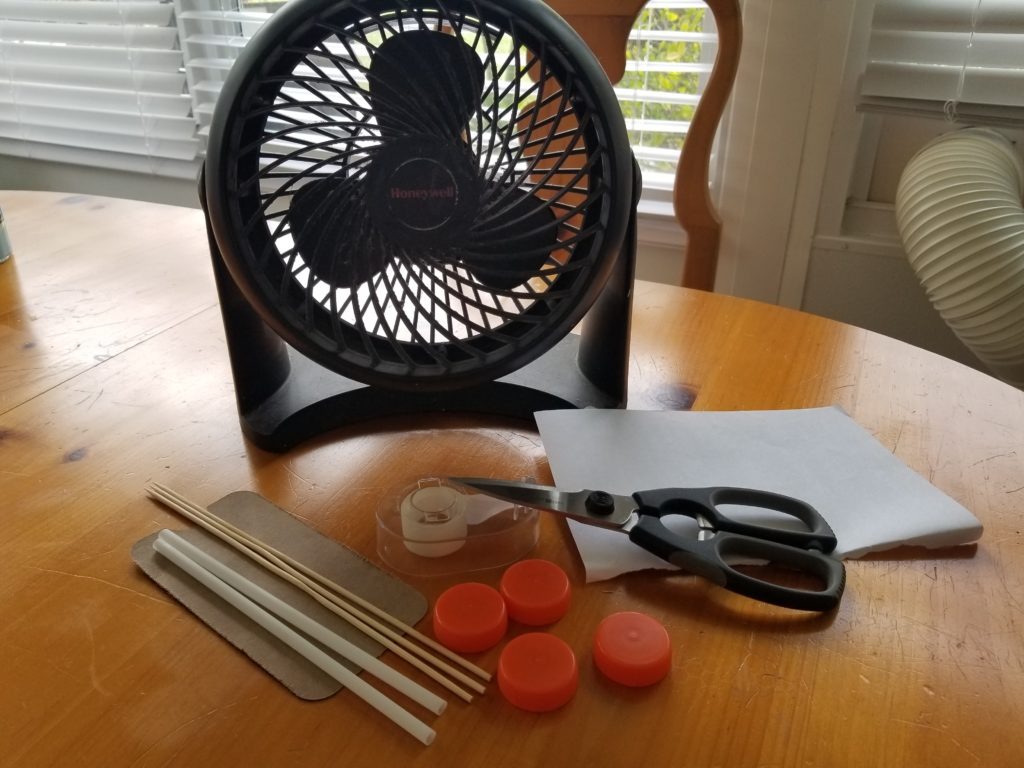
- Tape
- Two straws
- Three wooden dowels or skewer sticks
- Four bottle caps (equal-sized)
- 5in x 3in piece of cardboard
- Paper
- X-acto knife or another sharp tool to pierce a small hole in bottle caps
- Fan
Experiment Process:
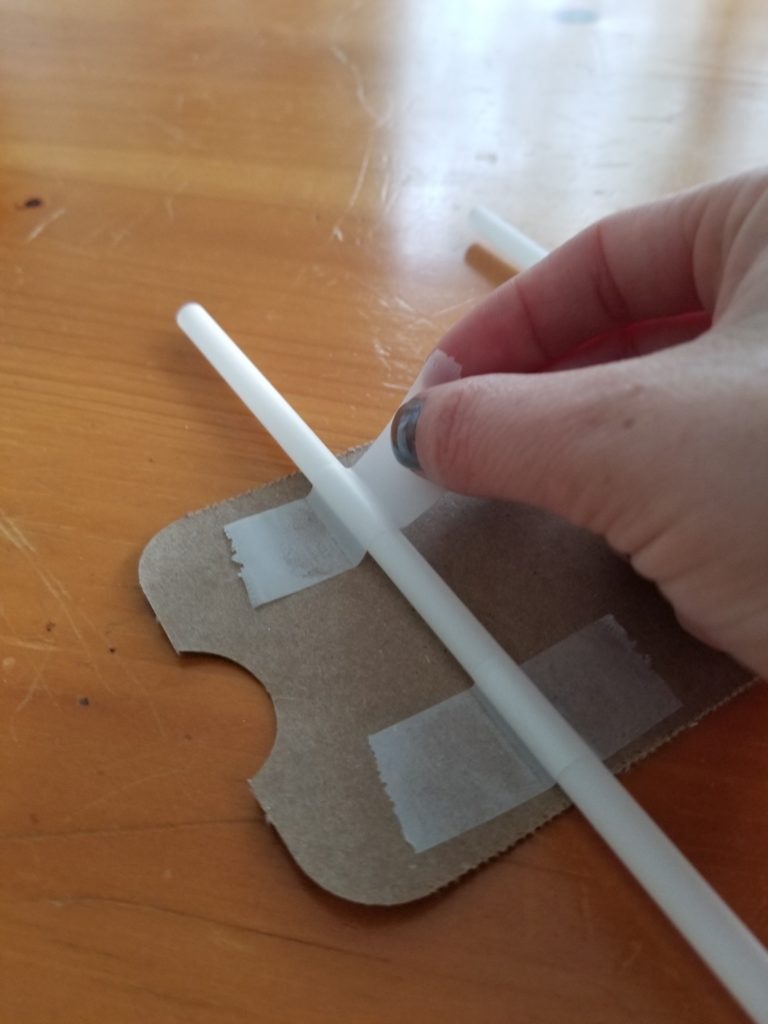
Step 1
Place one straw parallel to the top edge of the cardboard, about an inch away from the edge. Use tape to hold it in place. Make sure it is straight.
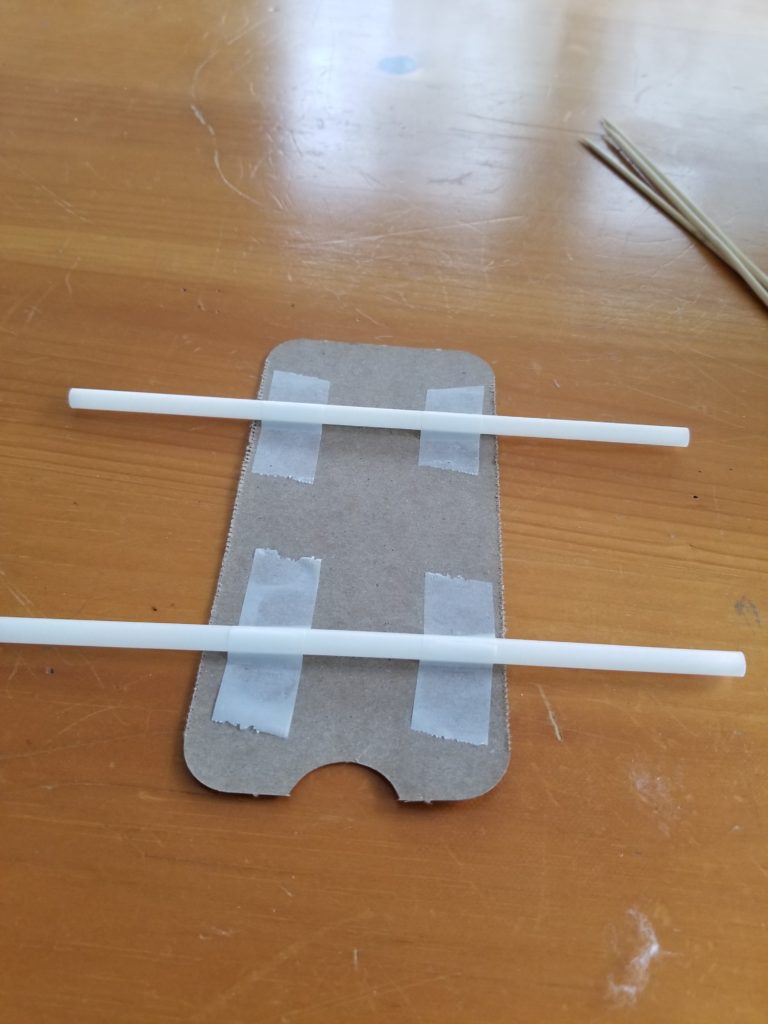
Step 2
Place the other straw using the same method parallel to bottom edge. Cut the straws evenly so there is about a half inch hanging off on either side.
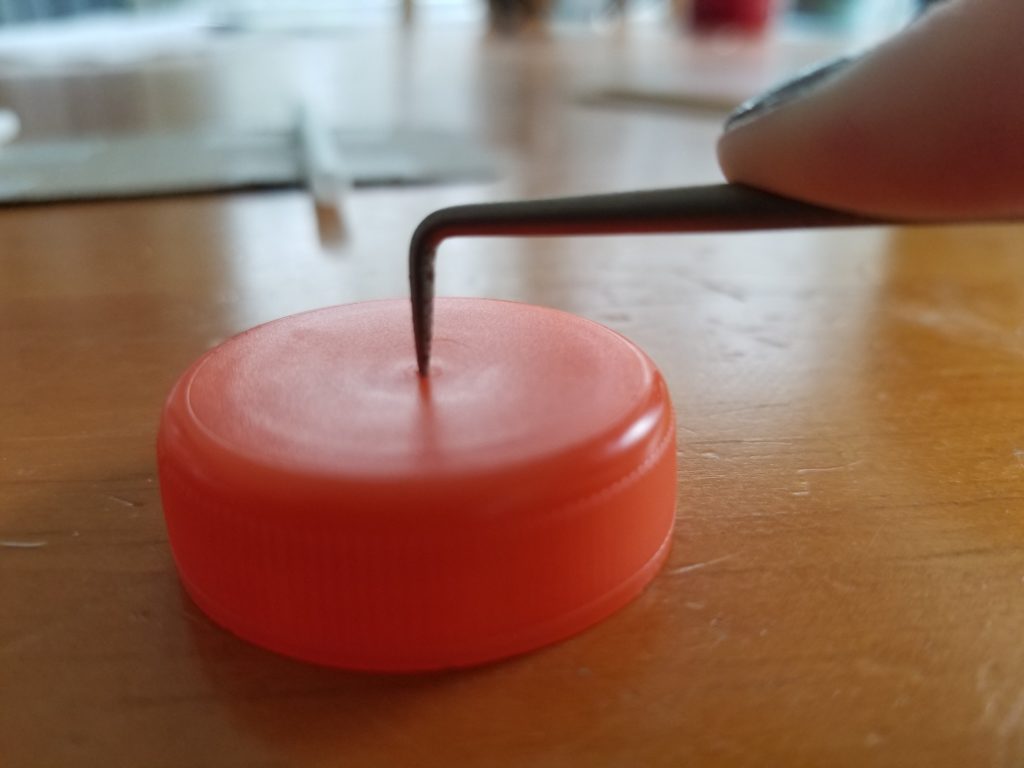
Step 3
Using an X-acto knife or another type of tool that can pierce easily through thick plastic, create a small hole in one of the bottle caps (just large enough for the wooden dowel to fit through snugly).
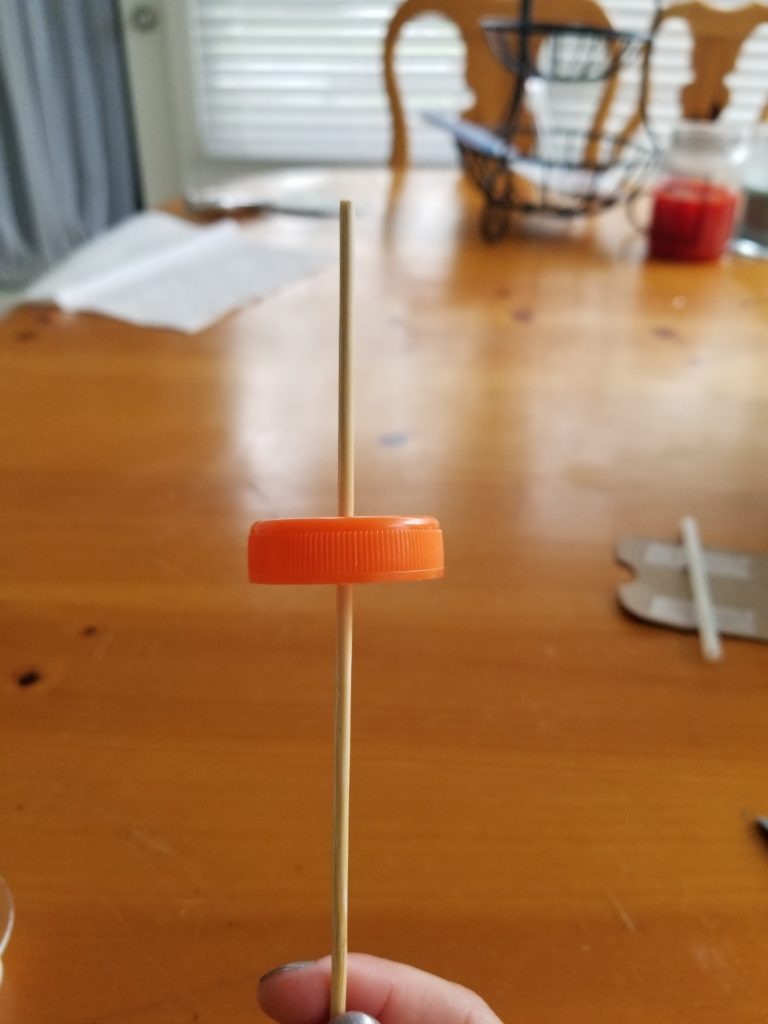
Step 4
To create the car’s axle, slide the wooden dowel through so that the top of the bottle cap is closest to the tip of the dowel.
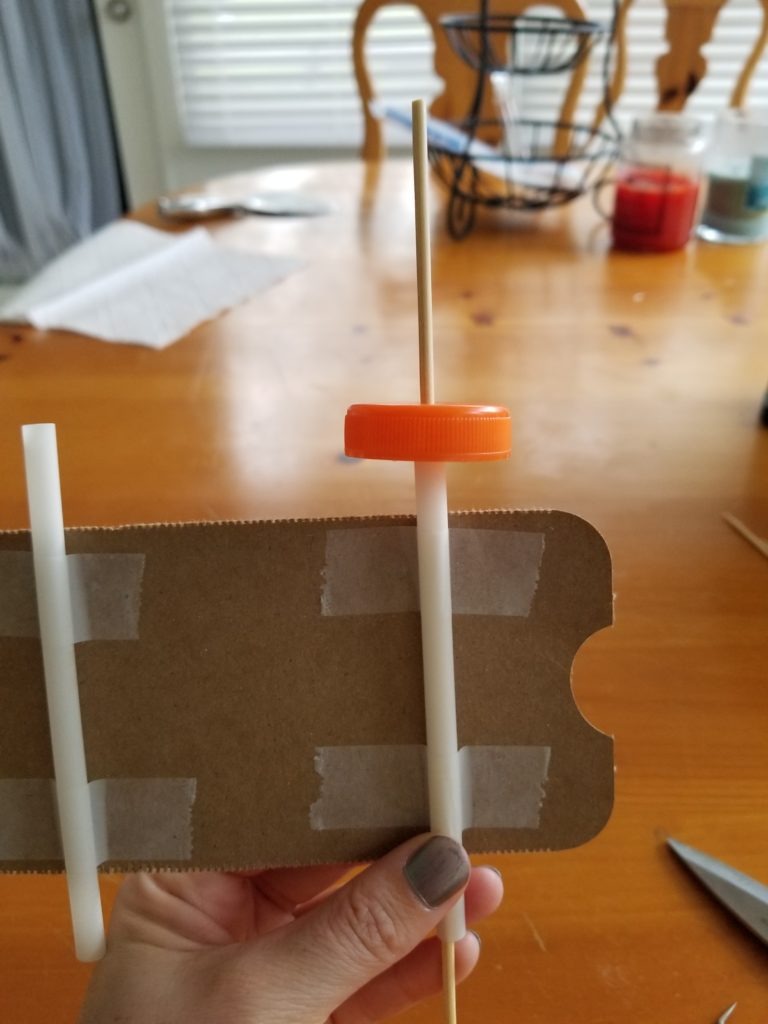
Step 5
Slide the dowel through one of the straws and adjust the position of the bottle cap as necessary so it just touches the edge of the straw.
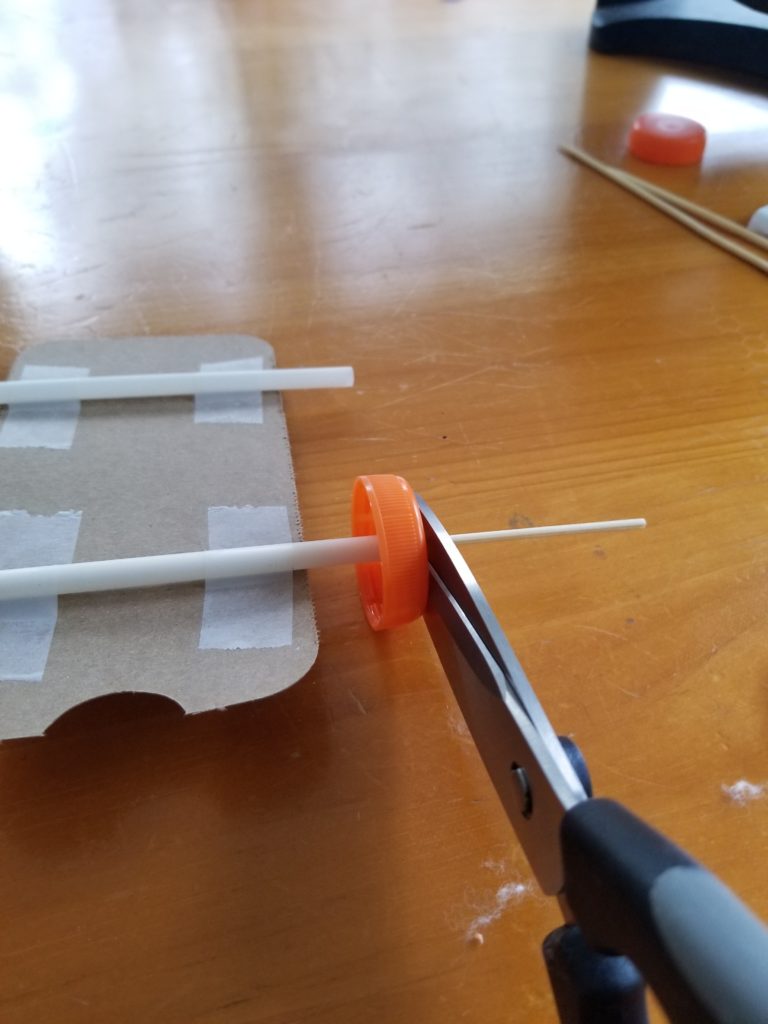
Step 6
Pierce a hole in another bottle cap and slide that cap onto the other side of the axel (wooden dowel) so the top of the cap faces away from the car. Make sure you slide your caps as close to the edge of the straw as you can and that they fit on the dowel slugly (they should not be able to wiggle much). Use scissors or X-acto knife to cut the dowels close to the caps.
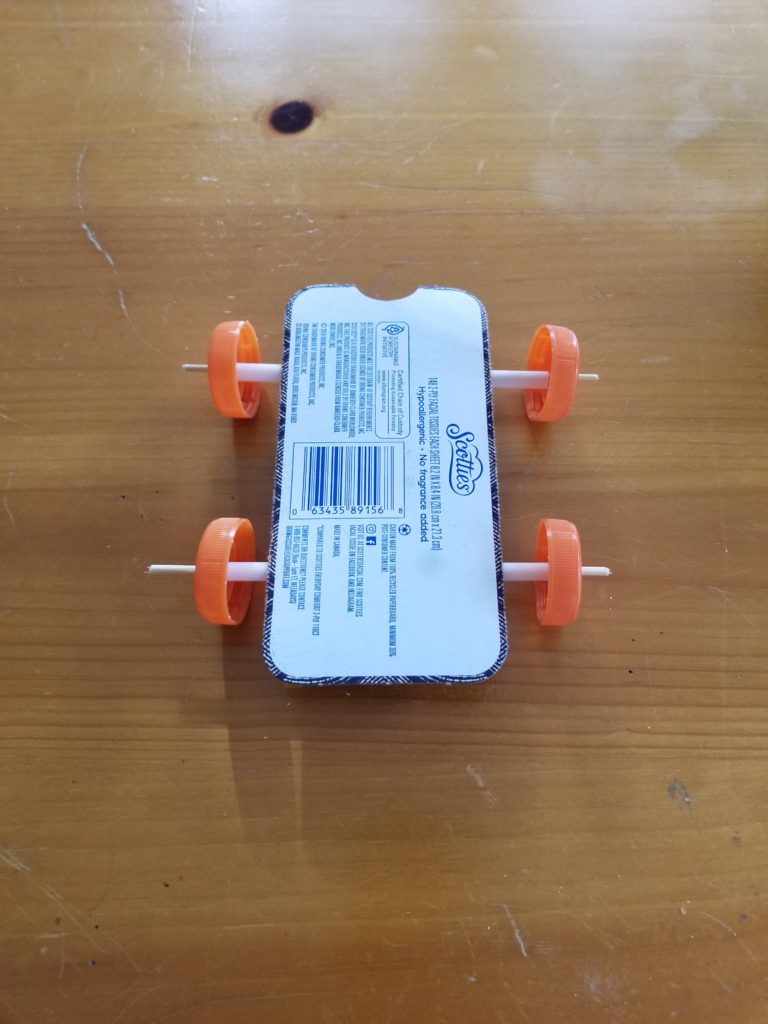
Step 7
Create your second axel and pair of tires for the back of the vehicle by repeating the steps above.
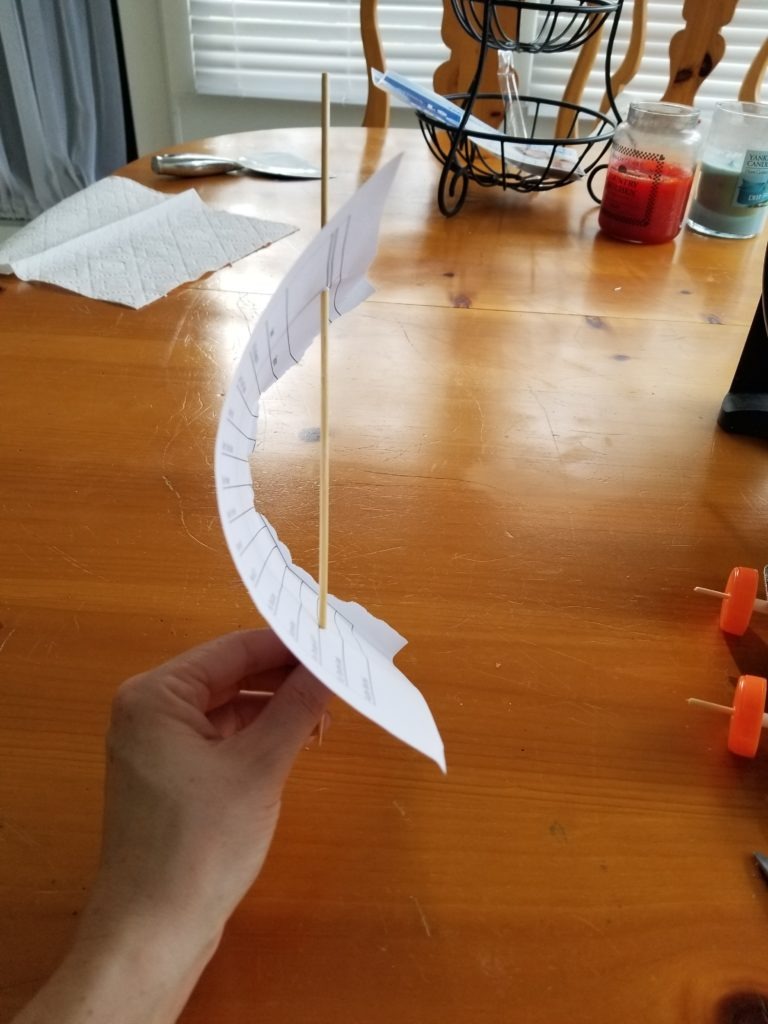
Step 8
To create a mast and sail, cut out a piece of paper about 6 inches x 4 inches and stick a wooden dowel through the top and bottom.
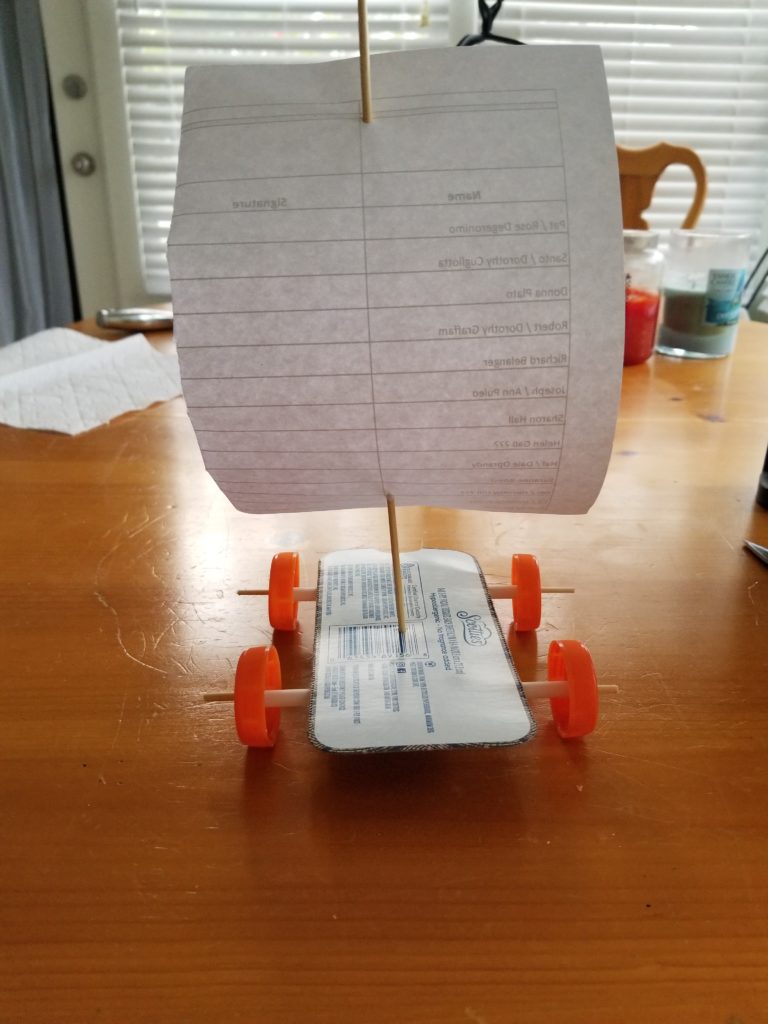
Step 9
Stick the dowel through the center of the cardboard car so that the mast and sail stick straight up from the top of the car.
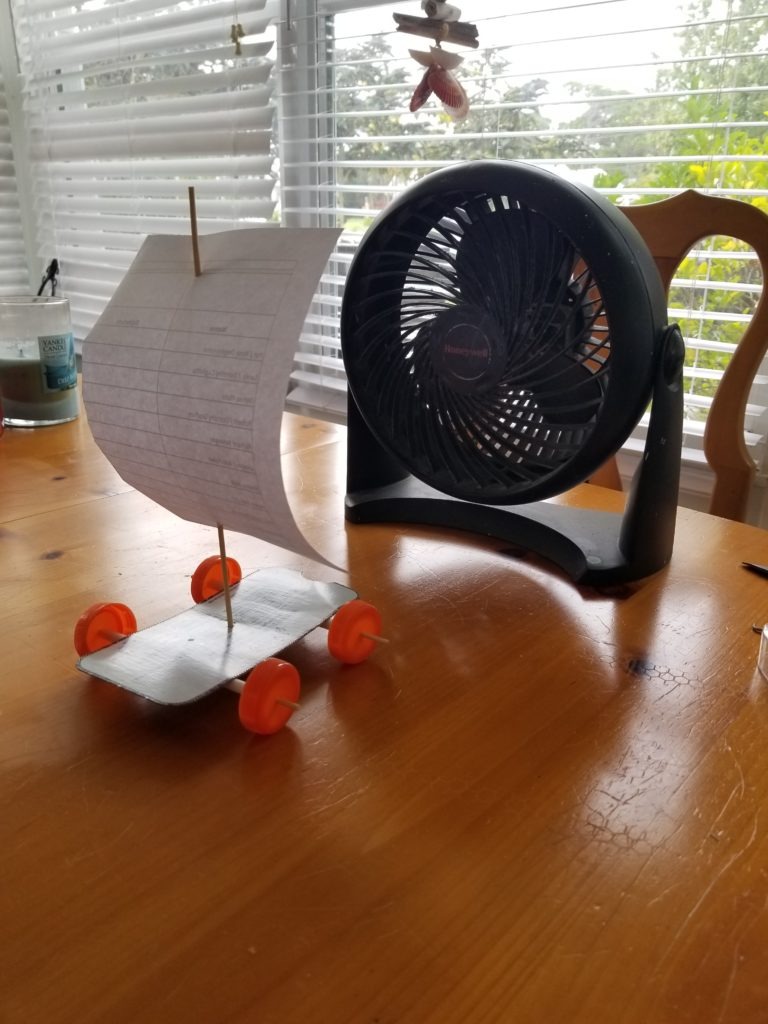
Step 10
Time to test out your car! Use a small electric fan to generate wind and see if you are able to make your toy car move! If your fan has multiple speed settings, try it out on low power first and then on high power. You may also wish to go outside and find a smooth surface to test your car out using natural wind.
Conclusions:
Share Your Results:
- Were you able to make your toy car move using the wind? How do you think this works?
- Did you notice a difference in the speed that your car traveled when you had the fan on low power versus high power?
- If you took your toy car outside, did it move faster or slower than when you used the fan to provide power?
Conclusions:
Wind is the movement of air from areas of high pressure to areas of low pressure. Wind is an excellent source of energy. As you observed from this activity, the force of the wind on the sail of your toy car provided enough power to move the car forward. The sails catch the wind, and energy is transferred from the wind to the sail, which moves the car forward.
Extension:
You may have noticed that while the wind is able to provide power for your car to make it move, the car might not always drive straight forward. This is because you have no way of controlling the steering of the vehicle, and also because the car is made of lightweight material and does not have a lot of stability. To improve your toy car’s stability, try adding a 1 or 2 lb lead fishing weight to the center of the cardboard car. The added weight should help to keep the car from turning as much.









